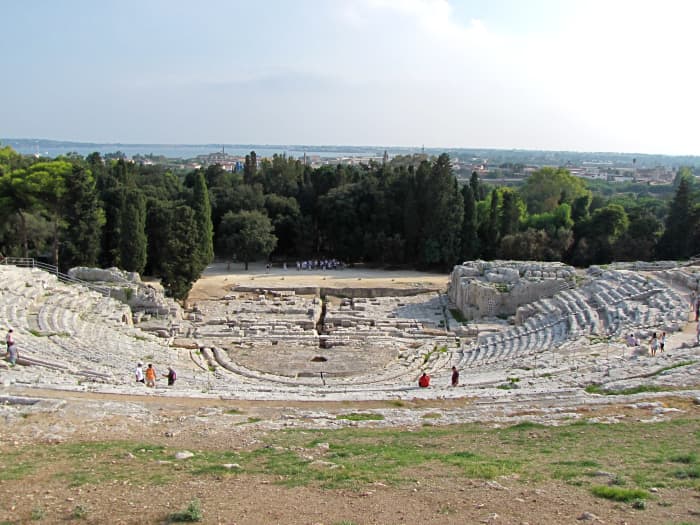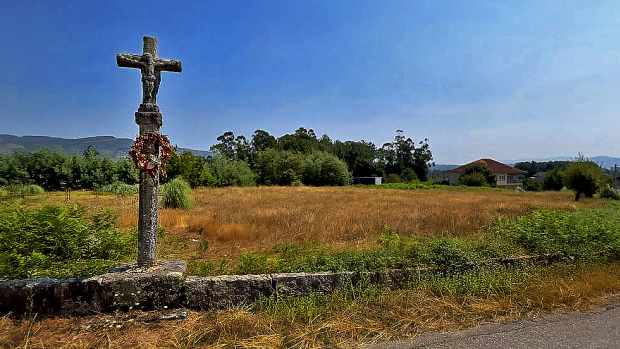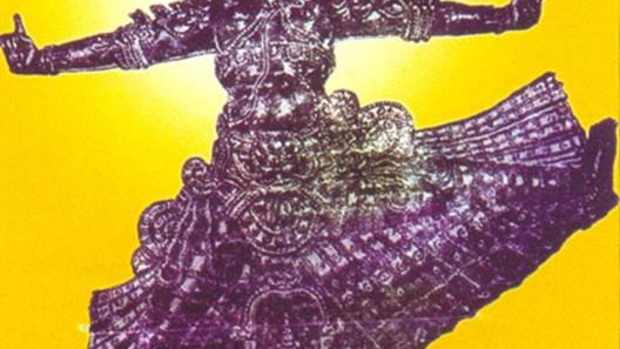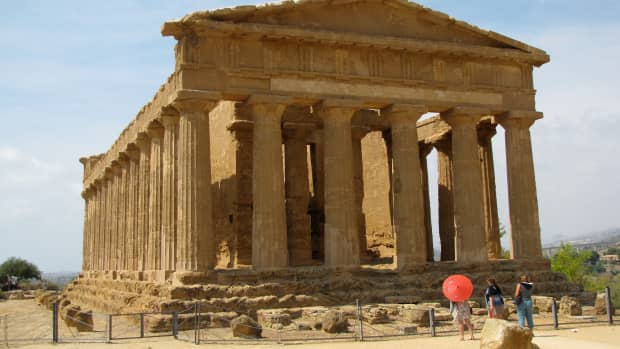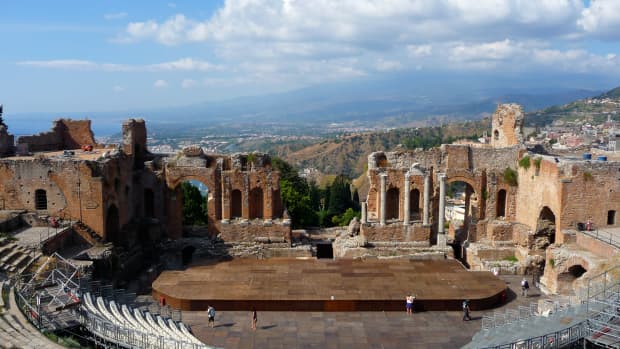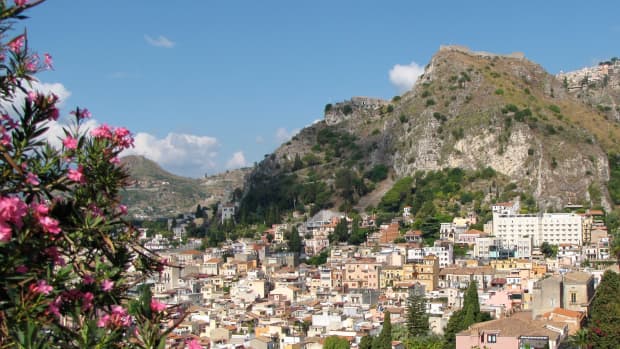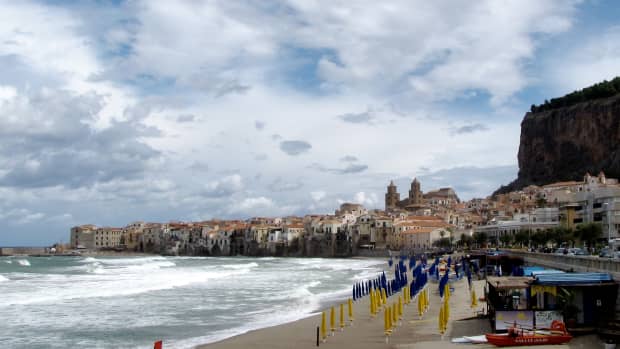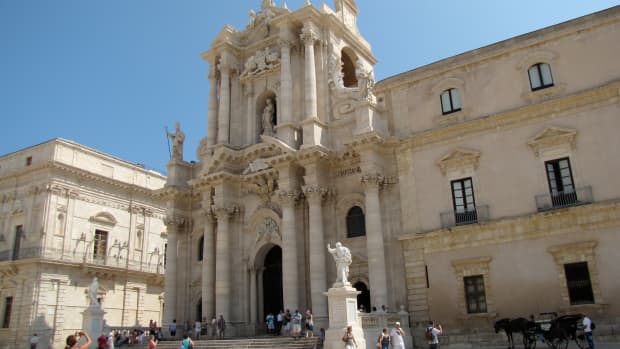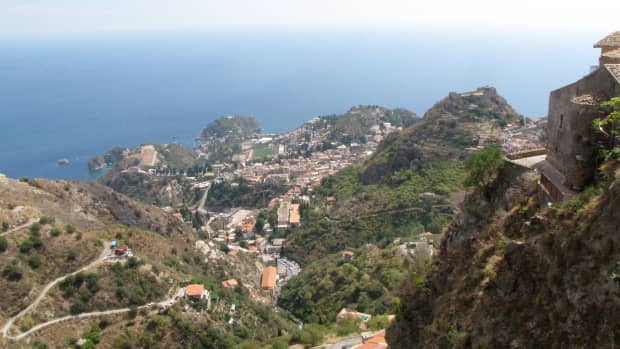A Visit to the Archaeological Park of Siracusa, Sicily
Exploring Greek and Roman History in Siracusa
As faith, luck, and history would have it, two of the most significant ancient archaeological sites from both Greek and Roman history are situated adjacent to one another in the northwest corner of Siracusa. The Neapolis Archaeological Park of Siracusa contains the stunning Greek Theatre as well as the Roman Amphitheatre that combine to make this one of the greatest archaeological sites in all of Italy.
The Roman Amphitheatre here is one of the largest amphitheaters ever constructed and dates back to the 3rd century AD. The star attraction of the park, however, is the very well-preserved Greek Theatre, which dates back to at least the 5th century BC.
The Archaeological Park, along with the entire city of Siracusa, was designated a UNESCO World Heritage Site in 2005, a distinction that is well deserved.
Upon entering the Archaeological Park you will first encounter the Roman Amphitheatre. The Roman's use of their amphitheaters was much different than that of the Greeks. Like the famous arena in Verona and the Colosseum in Rome, the amphitheater here in Siracusa was used primarily for violent Gladiator contests and wild animal hunts.
The theatre is large and measures about 140 meters by 119 meters (external dimensions) with the lower level having been dug out of the rock. All of the upper sections of the theater that were constructed of stone were dismantled in the 16th century by the Spanish for use on the island of Ortygia.
In the center of the elliptical arena is a rectangular room that is supplied by two canals. This area was possibly used to store equipment for the contests that took place above in the arena. Another possible use was to collect the blood and gore from the gruesome contests that took place.
Although the Roman Amphitheatre is not as well preserved as its Greek neighbor it is still a sight to behold and should not be overlooked.
A short walk from the Roman Amphitheatre is the Greek Theatre. Constructed in the 5th century BC, this wonderfully preserved theater has remained in remarkable condition and appears today much as it did centuries ago.
Unlike the Romans, the Greeks used their theater for a more civilized form of entertainment. Plays, tragedies, circus performances and alike were performed here to entertain the masses. It was also used for public meetings and gatherings. The theater was cut directly out of the limestone rock with the seats facing the sea providing a wonderful view, especially from the top tiers of the theater.
As one of the most impressive and largest theaters ever constructed in the Greek world, its fifty-nine rows of seating could hold as many as 15,000 spectators. Today, in addition to being one of Sicily’s most popular attractions, the theater is also host to an annual Greek Theatre festival held from mid-May until the end of June. If you happen to have a chance to attend a performance here take advantage of this once in a lifetime opportunity.
Just outside of the Greek Theatre is an area that is often overlooked by tourists. Called the Latomia del Paradiso, or Paradise Quarry, this former limestone quarry is now a very green and peaceful area that is filled with lemon and orange trees.
It is worth the time and effort to walk the path through this beautiful area which will take you to a huge cave called the Ear of Dionysius. Legend has it that Dionysius, the ruler of ancient Siracusa would eavesdrop on the prisoners who were incarcerated here. The cave, which was carved out of the limestone hill, is shaped similar to a human ear and because of its shape, it has excellent acoustics, which allowed Dionysius the ability to eavesdrop. The cave measures 23 meters high, 65 meters deep and makes for an interesting visit.
There are other quarries here in the park along with an interesting necropolis that has burial chambers cut directly into the rock. The most famous of these is said to be the Tomb of Archimedes, the great mathematician, although there is historical evidence to dispute this.
If you have just one day to spend in Siracusa I would recommend splitting the day between the Archaeological Park and the island of Ortygia. Both are not to be missed and will give you a great sense of the over 2,500 years of history that have helped to shape this corner of Sicily.
Ciao for now.
More on Sicily
- Visiting the Ancient Greek Theatre of Taormina, Sicily
A must see on any visit to Taormina is the ancient Teatro Greco or Greek Theatre. This archaeological wonder is located in one of the most beautiful settings, and is remarkably well preserved. - The Cathedral of Monreale, Sicily
The mosaics of Monreale are one of the greatest artistic creations in Italian history. Located on a hill just outside of Palermo on the island of Sicily, is the grand Cathedral of Monreale. This is the one church that you don't want to miss! - The Valley of the Temples - Agrigento, Sicily
One of Sicily's most famous archaeological sites is without a doubt the Valley of the Temples. Located just outside of Agrigento, this UNESCO World Heritage site is a must see when visiting Sicily.
Questions & Answers
Question: Are there any good places to eat near the Archaeological Park of Siracusa?
Answer: Unfortunately, we did not eat in the area of the Archaeological Park. I would try TripAdvisor or Yelp for some recommendations.





